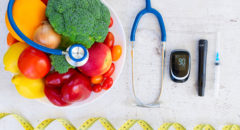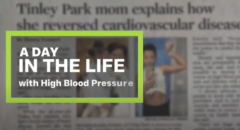less than 2,300 mg a day, and about 6 in 10 adults should further limit sodium to 1,500 mg a day.
• Foods that otherwise seem healthy may have high levels of sodium (e.g., cottage cheese and turkey breast luncheon meat).
• Sodium is already part of processed foods and cannot be removed.
• Sodium is included in surprising ways. For example, much of the raw chicken and pork bought from a store has been injected with a sodium solution.
• Too many foods in restaurants are high in sodium.
• Some foods that you eat several times a day, such as bread, add up to a lot of sodium even though each serving is not high in sodium.
People who should limit their sodium to 1,500 mg a day are:
• People who are 51 years or older
• Blacks
• People with high blood pressure
• People with diabetes
• People with chronic kidney disease
What Can Be Done
Everyone can:
• Choose to purchase healthy options and talk with your grocer or favorite restaurant about stocking lower sodium food choices.
• Read the Nutrition Facts label while shopping to find the lowest sodium options of your favorite foods.
• Eat a diet rich in fresh fruits and vegetables and frozen fruits and vegetables without sauce.
• Limit processed foods high in sodium.
• When eating out, request lower sodium options.
• Support initiatives that reduce sodium in foods in cafeterias and vending machines.
Places that produce, sell, or serve food can:
• Consider joining voluntary initiatives to reduce sodium such as the National Salt Reduction Initiative
• Give choices to consumers to help them reduce sodium in their diet by:
• Stock lower sodium foods.
• Ask food manufacturers to provide lower sodium foods.
• Make phased reductions in the amount of sodium they add to foods they sell or serve.
• Limit the amount of sodium in food products.
• Provide information about sodium in foods.
The federal government is:
• Using the national “Million Hearts™” initiative to prevent a million heart attacks and strokes over the next 5 years. Reducing sodium in the population is a major part of this initiative.
• Encouraging its agencies and departments to adopt the HHS/GSA or similar procurement guidelines that define how much sodium there can be in products that are sold or served in their facilities.
• Improving data collection on sodium, including the number of sodium people consume, and their knowledge, behaviors and health outcomes.
State and local health departments can:
• Increase public awareness about the amount of sodium added to processed and packaged foods.
• Increase public awareness of the health outcomes of a high-sodium diet.
• Help reduce sodium in people’s diets.
• Encourage reductions in the amount of sodium in foods purchased in cafeterias and vending machines.
Check the Nutrition Facts label which lists sodium content per serving. For help reading labels, click here.
To read this and other CDC Vital Signs articles, click here.








